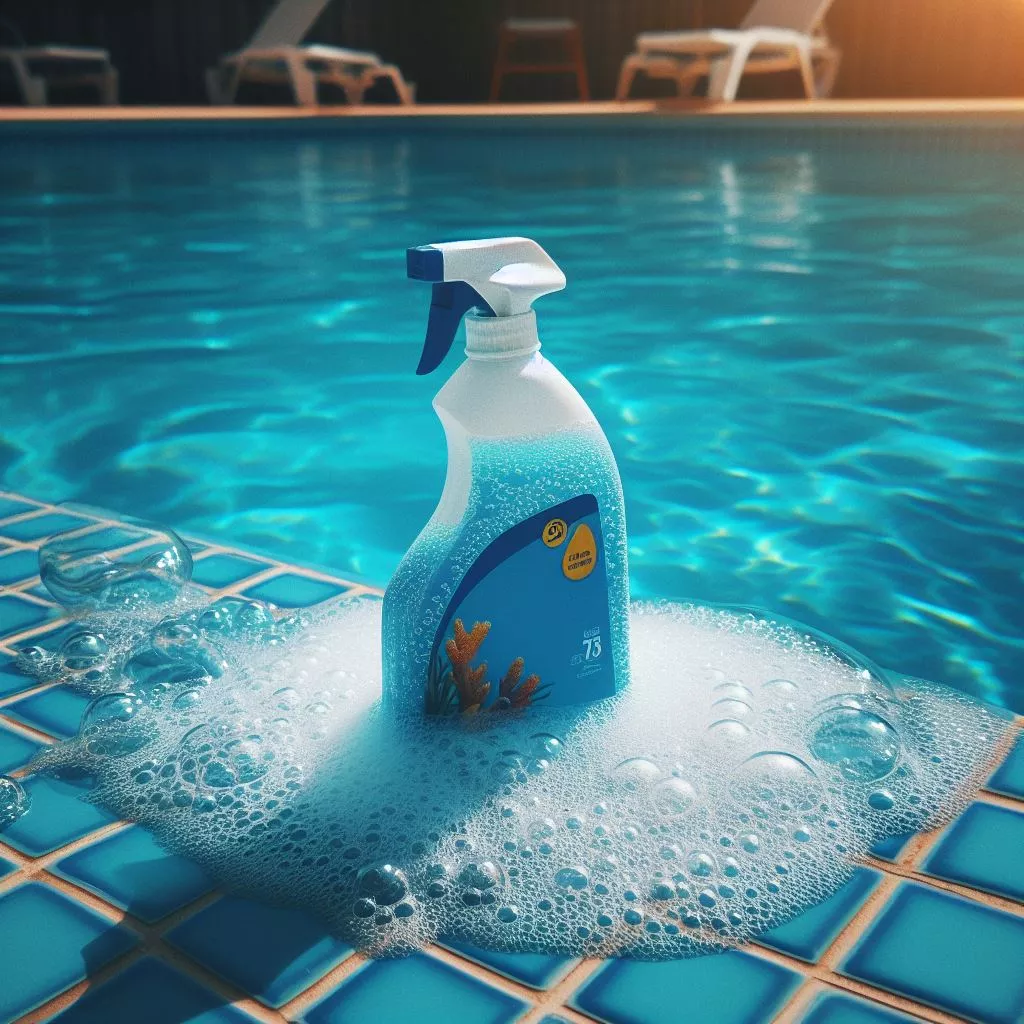Maintaining a clean and algae-free swimming pool is essential for ensuring a safe and enjoyable experience for swimmers. One common method used to control algae growth is the application of copper sulfate algaecide. This article explores the chemical reaction between copper sulfate algaecide and pool algae, shedding light on its mechanism and effectiveness in algae control.

Understanding Copper Sulfate Algaecide
Copper sulfate algaecide is a chemical compound commonly used to control algae growth in swimming pools. It is available in various formulations, including liquids and granules, and is known for its effectiveness in preventing and treating algae infestations.
Chemical Composition of Copper Sulfate Algaecide
Copper sulfate algaecide primarily consists of copper sulfate pentahydrate (CuSO4·5H2O), a crystalline compound composed of copper, sulfur, and oxygen atoms. When dissolved in water, copper sulfate dissociates into copper ions (Cu2+) and sulfate ions (SO4^2-), which play a crucial role in the algaecidal action.
Mechanism of Action
When copper sulfate algaecide is added to pool water, the copper ions interact with various components of algae cells, leading to their destruction. The key mechanisms of action include:
a. Disruption of cell membranes: Copper ions penetrate algae cells and disrupt their membranes, causing leakage of cellular contents and eventual cell death.
b. Inhibition of enzyme activity: Copper ions interfere with essential enzyme activities within algae cells, disrupting metabolic processes vital for their survival.
c. Oxidative stress: Copper ions induce oxidative stress within algae cells by generating reactive oxygen species (ROS), leading to cellular damage and death.
Chemical Reaction with Pool Algae
The chemical reaction between copper sulfate algaecide and pool algae involves several steps:
a. Dissolution: Copper sulfate algaecide dissolves in pool water, releasing copper ions and sulfate ions into the solution.
b. Adsorption: Copper ions adsorb onto the surface of algae cells, initiating the algaecidal action.
c. Penetration: Copper ions penetrate algae cells, disrupting cellular structures and metabolic processes.
d. Cell lysis: The disruption of cell membranes and vital cellular functions leads to the lysis (rupture) of algae cells, releasing cellular contents into the surrounding water.
e. Precipitation: In some cases, copper ions may react with other chemicals present in the pool water, forming insoluble copper compounds that precipitate out of solution.
Factors Affecting Effectiveness
Several factors influence the effectiveness of copper sulfate algaecide in controlling pool algae:
a. Concentration: The concentration of copper sulfate algaecide in the pool water determines its potency against algae. Higher concentrations may provide more effective algae control but must be used within recommended limits to avoid adverse effects.
b. pH Levels: The pH of pool water can affect the availability and activity of copper ions. Optimal pH levels (typically between 7.2 and 7.8) ensure proper dissolution and efficacy of the algaecide.
c. Water Circulation: Adequate water circulation helps distribute copper ions evenly throughout the pool, maximizing contact with algae cells and enhancing the algaecidal action.
d. Sunlight Exposure: Direct sunlight can degrade copper sulfate algaecide over time, reducing its effectiveness. Pool owners should monitor and replenish algaecide levels regularly, especially in outdoor pools exposed to sunlight.
Safety Considerations
While copper sulfate algaecide is effective in algae control, it is essential to use it responsibly and adhere to safety guidelines:
a. Dosage Control: Follow manufacturer instructions and recommended dosage rates to avoid overapplication, which can lead to copper buildup and potential toxicity.
b. Monitoring Copper Levels: Regularly test pool water for copper levels to ensure they remain within safe limits for swimmers and pool equipment.
c. Precautions for Metal Surfaces: Copper sulfate algaecide can stain or corrode metal surfaces, so it’s important to avoid direct contact with metal pool components or fixtures.
d. Environmental Impact: Properly dispose of unused algaecide and avoid contaminating natural water bodies to prevent environmental harm.
Conclusion
Copper sulfate algaecide plays a crucial role in controlling algae growth in swimming pools through its algaecidal action against algae cells. Understanding the chemical reaction between copper sulfate algaecide and pool algae, along with factors influencing its effectiveness and safety considerations, is essential for maintaining a clean and safe swimming environment for all pool users. Proper application and responsible use of copper sulfate algaecide contribute to the longevity and enjoyment of swimming pools while minimizing algae-related issues.

 Instant
Quote
Instant
Quote Email
Us
Email
Us